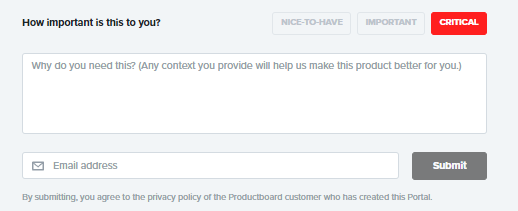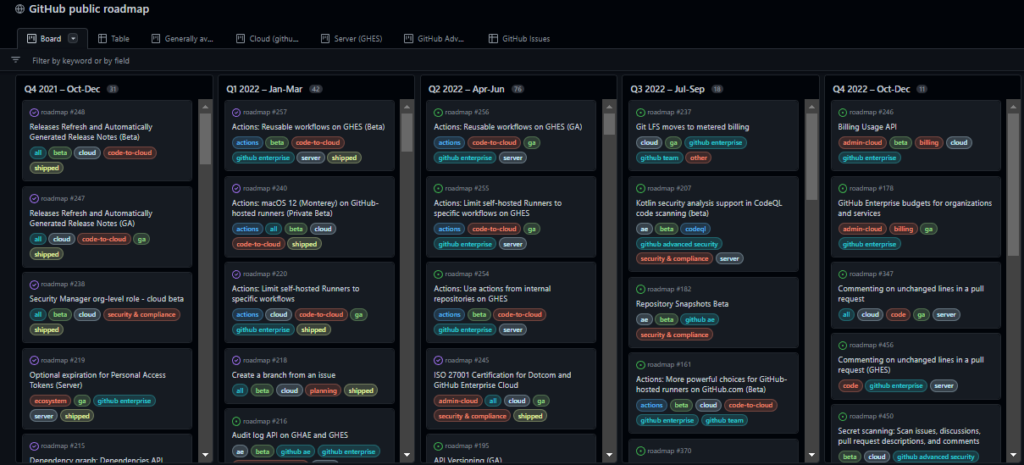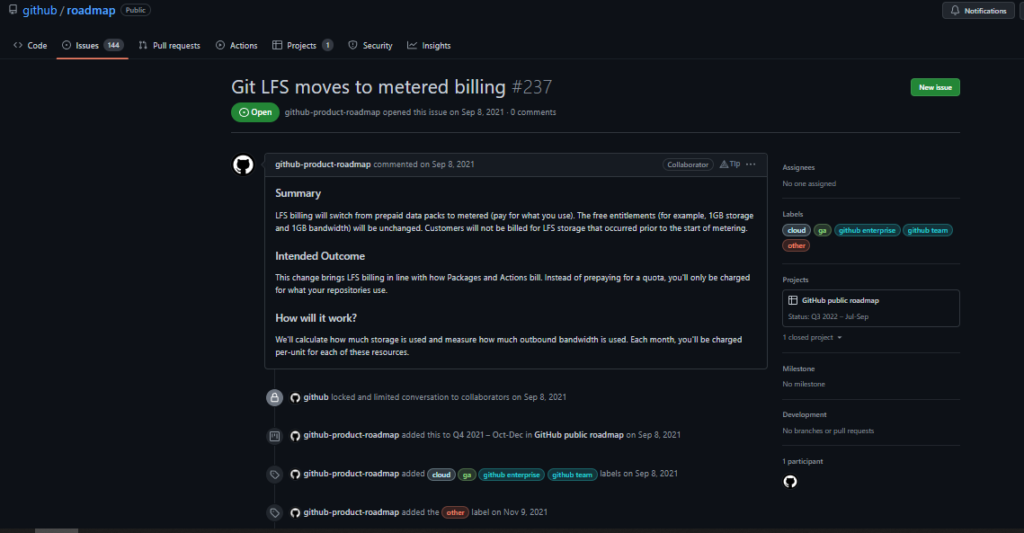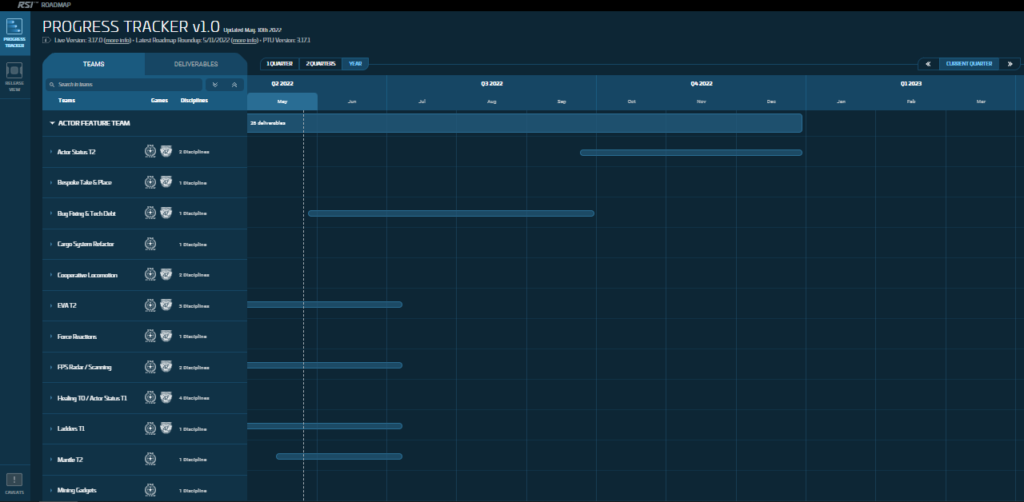[ad_1]
A product roadmap is one of your most important communication tools when it comes to product management. It can help to convey your product vision and product strategy to its various stakeholders for buy-in, manage multiple products and your product backlog, and keep track of where features are in regards to prioritization. As a product manager, you’re doing yourself a great disservice to your product development if a product roadmap is not present.
A successful product needs to have a plan of where it’s going in order to succeed. You want to ensure that your product teams are all on the right track and train.
A good product roadmap can help you do just that.
Sometimes you just need a spark of inspiration to get that product roadmap going. In this article, we’ll look at a few product roadmap examples to follow. I will feature different types of product roadmaps to give you an idea of different ways they can be done.
I’ll also include a poor product roadmap example to showcase what NOT to do.
What is it?
Unreal Engine is a complete suite of creation tools for game development, architectural and automotive visualization, linear film and television content creation, broadcast and live event production, training and simulation, and other real-time applications.
The Unreal Engine is best associated with game development. First released in 1998, the Unreal Engine released its 5th edition, Unreal Engine 5, in April 2022.
Let’s take a closer look at this product roadmap. Here is the high level view:
While you can look at the product roadmap of the new product, Unreal Engine 5, you can also view the product roadmap of previous versions like Unreal Engine 4.
While it doesn’t show up in this screenshot, a number of the images are gifs to show what they mean with each listed feature.
From a high level view, you can have a general idea of the product vision and product goals for the current version of the Unreal Engine.
However, depending on your knowledge, you might not understand what some of these specific features on the product roadmap mean.
For example, what is temporal super resolution? If you click on it, it gets into more of the details of what this specific feature is:

Great! That certainly helps explain this specific feature.
With the image above, do note the bottom section of asking how important this specific feature is to you.
On a product with such a large customer base that Unreal Engine has, there are going to be a number of stakeholders with different requirements. Business goals will differ depending on the stakeholder.
Using the example of temporal super resolution above, for some stakeholders, this specific feature may be nice to have, important, or critical.
When you select one of those three options, this pops up:

You can vote on the importance of this specific feature, and provide any context of why that’s the case through an email to give feedback to the internal teams.
So, what makes this a great example of a product roadmap?
It’s very easy for product roadmaps to be filled to the gills of features, milestones, epics, and so on.
It’s easy to start looking at one and have your eyes start to cross with words everywhere. Like unfolding one of those old maps when you would travel prior to using smartphones.
What makes the Unreal Engine product roadmap a fantastic one to be inspired by is both the ease of viewing, and the depth that it can go should you wish to explore further.
From the top layer of the product roadmap, you have a clear, visual example (some using gifs) to convey what deliverables are on the product roadmap.
However, if you need a better understanding of what each product feature means and what it will do, you can click on it to go in further to get much more details.
It’s also easy for external stakeholders to provide feedback.
In regards to tools, the product roadmap software that the Unreal Engine makes use of productboard.
What is it?
GitHub is a code hosting platform for version control and collaboration. It lets you and others work together on projects from anywhere.
By a wide margin, GitHub is the largest code hosting platform. If you’re working at a company involving software development, I’m sure your development team makes use of it.
Here is the high-level view of GitHub’s features roadmap. If you’re familiar with Jira, this will look familiar to you.

Clicking on any of the user stories will bring up that user story in more detail to track progress.

So what makes this a great example for a product roadmap?
There’s two main aspects that make the GitHub product roadmap a great example of one to look to for inspiration.
Firstly, using its own tools to create the product roadmap is a case of GitHub “eating their own dog food”.
What do I mean by this?
By “eating your own dog food”, this is the practice of a company making use of their own products and services.This term was popularized by Microsoft.
They didn’t use an external tool (like productboard with Unreal Engine), but instead made use of one of their internal tools.
Secondly, what makes this such a great example of a product roadmap, is its clear understanding of its stakeholders.
How did you feel when you first took a look at this roadmap? Did you think it was a bit too much? Too much upfront?
In regards to functionality, GitHub might not be the most user-friendly compared to what you are used to.
However, when it comes to stakeholders, GitHub is more or less all for software developers.
You’re not likely going to have a number of personas, like Jim from accounting, or Barb from legal using GitHub.
Software developers are used to complexity. By all means I’m not saying you can take shortcuts with the UX and UI, but due to how git and GitHub are so integrated into the world of software development, it’s not as big of a concern if there was more variety in regards to stakeholders.
It’s common for development teams to be spending their working days in GitHub when adding in code, deciding on prioritization, and so on.
So instead of needing to figure out how to learn to use another tool, development teams can just take a quick look through the product roadmap at GitHub with their knowledge of its tool.
Anything from user stories, to epics, integrations, sprints, product releases and timeframes for feature release plan – it’s all there for them to use.
It’s a perfect example of a product roadmap understanding its key stakeholders, and delivering that information to them.
What is it?
Star Citizen is an upcoming space living simulator video game for Microsoft Windows and GNU/Linux[1] in development by Chris Roberts and Cloud Imperium Games.
Both Star Citizen and Squadron 42 are set in a 30th-century Milky Way centered around the fictional UEE (United Empire of Earth). A strong focus will be placed on player interaction, with player behaviour influencing and being influenced by a dynamic economy system.
Over the last several years, Star Citizen has become a bit of a running joke in the gaming community.
Star Citizen is a crowd-funded title: As of writing in May 2022, about 3.84 million customers have pledged around $466 million dollars to the project.
Since its announcement in October of 2012, Star Citizen has been delayed numerous times, with release dates constantly pushed back. The development process has been constantly shifting, with constant adding of new features leading to scope creep .
While there are demo builds that are available to play, there is no indication if there will be a full product launch anytime soon, or ever. It’s a great example of scope creep and poor project management that I’m sure will be studied and analyzed for years.
For more about the rocky development of Star Citizen, check out this in-depth article from Forbes back in 2019, when funding was around $300 million.
Here is what the public product roadmap looks like as of writing:

So as far as a product roadmap goes, it’s fairly detailed, and easy to expand the layers and get more information.
You can get a closer look at aspects like the metrics, promised deliverables, and dependencies.
So why am I including this as an example of a bad example of a product roadmap?
With the brief summary I provided, you can see this game has very little product vision and is all over the place in regards to project management.
In mid 2020, customers were frustrated with the lack of updates of the product on the product roadmap. In response, the development team announced a product roadmap for its roadmap.
Yes, you read that right. They made a product roadmap, for the product roadmap.
The new Roadmap is something we hinted at in March but because that is still very much in development, we can’t share as much about it as I would like. Believe me when I say I’m personally very eager to release it to you.
We took the time to explore options for how we could better represent our progress, and I believe we are getting close to landing in a pretty great spot. Our goal with this new Roadmap is to give you better visibility into what teams are working on, share the progress of more teams, and go so far as to indicate the size of the projects for our tech, features, and content teams.
This new Roadmap will drastically change how you follow the development progress for both Squadron 42 and Star Citizen. The new Roadmap will focus more on breaking out teams and features so you can interactively see what is being worked on across all teams, as opposed to what features will make X release.
While it’s not quite ready, it’s currently top priority on the web team’s current projects.
In the immediate future, we plan to deliver the following communications:
Give an explanation of the goals of our new Roadmap and what to expect from it
Show a rough mockup of the proposed new Roadmap
Share a work in progress version of the Roadmap for at least one of our core teams
And then finally transition to this new Roadmap
To say the community wasn’t pleased was an understatement. You can read some of the comments here. A number of articles from the gaming media wrote about this amusing incident and created memes about it.

Star Citizen is a whole bundle of bad project management, unclear product visions, scope creep to end all scope creep, and next to zero initiatives to ever complete working on the game. After all, the game is crowdfunded, so they can take as much time as they want.
It’s situations like this where you can make a product roadmap for future product roadmaps.
In Conclusion
We’ve taken a look at a few product roadmaps to get inspired by, and one to avoid.
By now, you should have a better understanding of what makes for a quality product roadmap that you can deliver at your organization.
So gather your product team, make use of quality teamwork, and come up with a strategic roadmap that makes sense for your product.
If you’re looking for more information on product roadmaps, here are some additional articles you can check out:
Subscribe to our email list for more on all things product management.
Related Reads:
Also Worth Checking Out:
List of Tools:
[ad_2]
Source link









